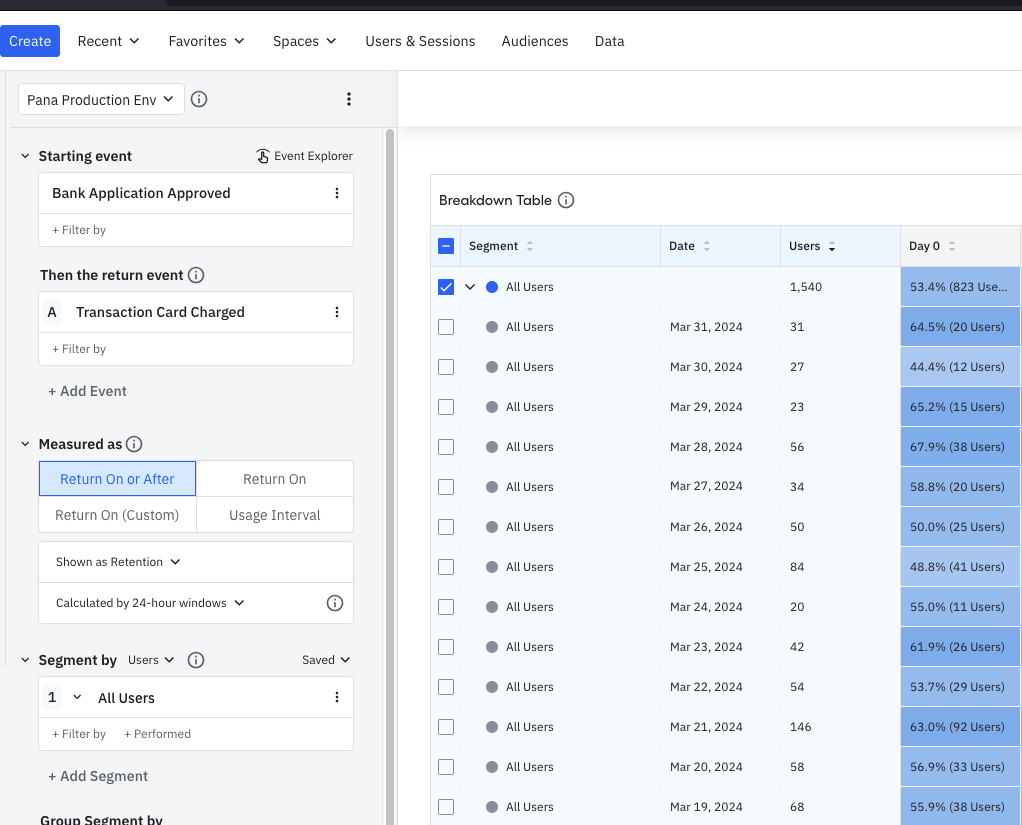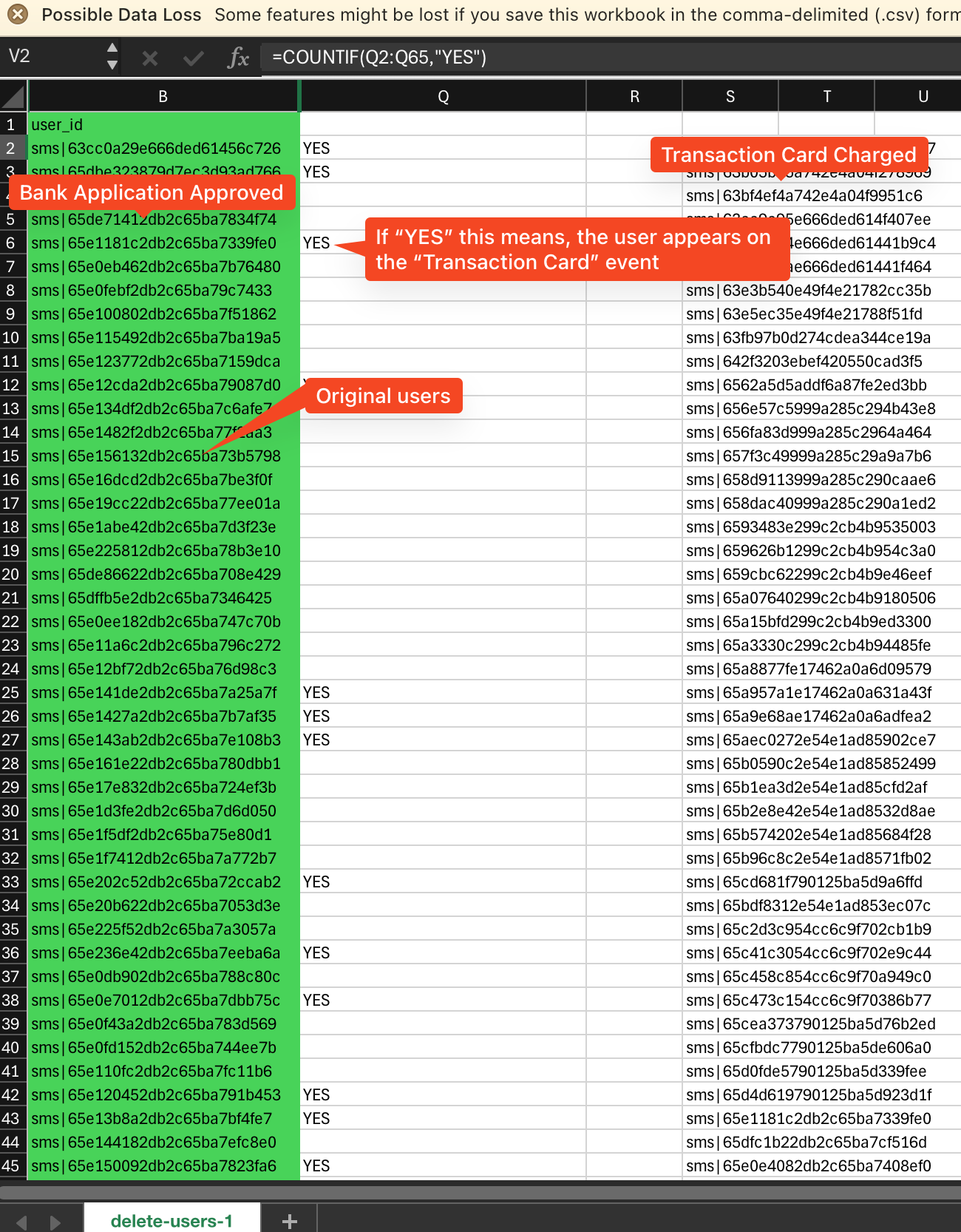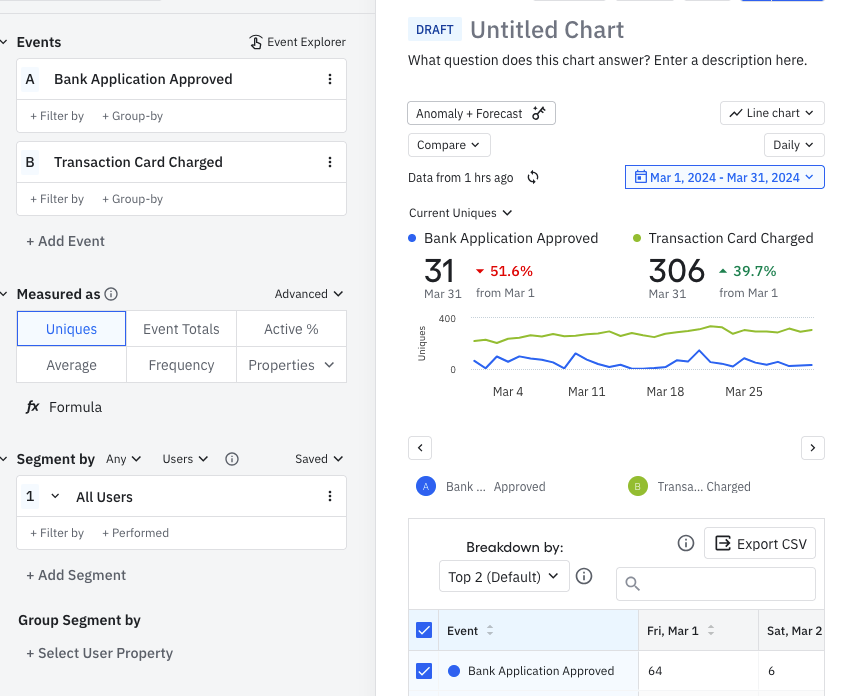Hi everyone :)
I’ve been researching Amplitude’s community and I’ve read, re-read, asked ChatGPT Claude, Gemini to better understand my breakdown table. But I don’t seem to get it.
I want to calculate the retention rate of my users from the month of march.
- I’ve selected the dates March 1st to March 31st.
- The starting event is “Bank Application Approved”
- The return event is “Transaction Card Charged”
Meaning:
- If the user opened a new bank account, I want to see when it used his card.
But some numbers don’t add up.
Given the following 2 screenshots:

……

(If I interpret the chart correctly).
- Each row of the Users column give me the number of users who triggered “Bank Application Approved” on that day.
- Day 0 gives me the number of users of that given row, that triggered the “Transaction Card Charged”.
- Day 1, Day 2, Day 3 are NOT calendar days, but rolling-days that move every 24 hours.
E.g:
March 1st, 64 users had their bank application approved, and on that same day 36 out of the 64 transacted with their card.
If from my reasoning above, #2 and #3 are correct, then why is it that when I go and check for those events individually in the segmentation graph, and then download the users, I don’t have the right count?
Let me explain.

I decided to corroborate the data, as these return values seem exceedingly high.
I went ahead and created a separate segmentation chart (shown below)

With this segmentation chart I hovered my mouse over March 1st (Day 0) for Bank Application Approved and Transaction Card Charged.
The Bank Application gives me the 64 that shows correctly on the Breakdown Table. But The Transaction Card shows me 219 (Which is to be expected as not only people who opened the Bank Application would use the card).
That means, that I have to remove those from 219 who aren’t part of the original 64 to give me the 36 count, right?
For that:
- I downloaded both user lists (Bank Application Approved and Transaction Card Charged for March 1st) in CSV format.
- I then extracted the userId into 2 different Excel columns.
- I matched Bank Application Approved’s userId with Transaction Card Charged
I got only 7 positives.
If I’m getting this right, there should’ve been 36 matches, but I’m seeing only 7. To clear things out, I decided to include March 2nd as well. But if I aggregate both March 1st, and March 2nd, I only get 14 matches.
Would someone be so kind to explain?







